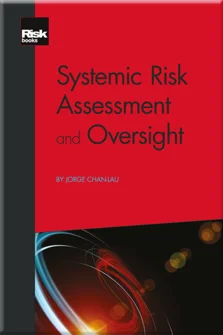The Bottom-up Approach to Systemic Risk
Why Systemic Risk Oversight Matters
The Bottom-up Approach to Systemic Risk
Fundamental Information and Firm-level Risk
Extracting Risk Measures from Credit Derivatives and Bonds
Equity-implied Methods and Risk-neutrality Transformations
Systemic Risk Measurement: Statistical Methods
CoRisk: Quantile Regressions in Practice
Balance-sheet Network Analysis
The Portfolio-based Approach to Systemic Risk
The Regulation of Systemic Risk
The complexity of the financial system, together with a still-evolving understanding regarding the transmission of risks between the financial and real sectors, makes identifying and measuring systemic risk a complex task. Challenges arise from the lack of an accepted theory of systemic risk to ground the empirical work, prompting the observation that systemic risk is akin to a grab bag of scenarios that are supposed to rationalise intervention in financial markets (Hansen, 2012).
Notwithstanding the lack of solid theoretical underpinnings, regulatory, supervisory and risk management needs have prompted a search for systemic risk measures, with more than 30 measures developed by late 2011 (as documented by Bisias et al, 2012). These measures attempt to capture different dimensions of systemic risk, but they can be trimmed down upon adoption of the G-20 operational definition of systemic risk, as discussed in Chapter 1. According to the G-20 definition, systemic risk is the disruption to financial services that is caused by an impairment of all or parts of the financial system and has potential to have serious negative consequences for the real economy (IMF, FSB and BIS, 2000).
Th
Copyright Infopro Digital Limited. All rights reserved.
As outlined in our terms and conditions, https://www.infopro-digital.com/terms-and-conditions/subscriptions/ (point 2.4), printing is limited to a single copy.
If you would like to purchase additional rights please email info@risk.net
Copyright Infopro Digital Limited. All rights reserved.
You may share this content using our article tools. As outlined in our terms and conditions, https://www.infopro-digital.com/terms-and-conditions/subscriptions/ (clause 2.4), an Authorised User may only make one copy of the materials for their own personal use. You must also comply with the restrictions in clause 2.5.
If you would like to purchase additional rights please email info@risk.net










